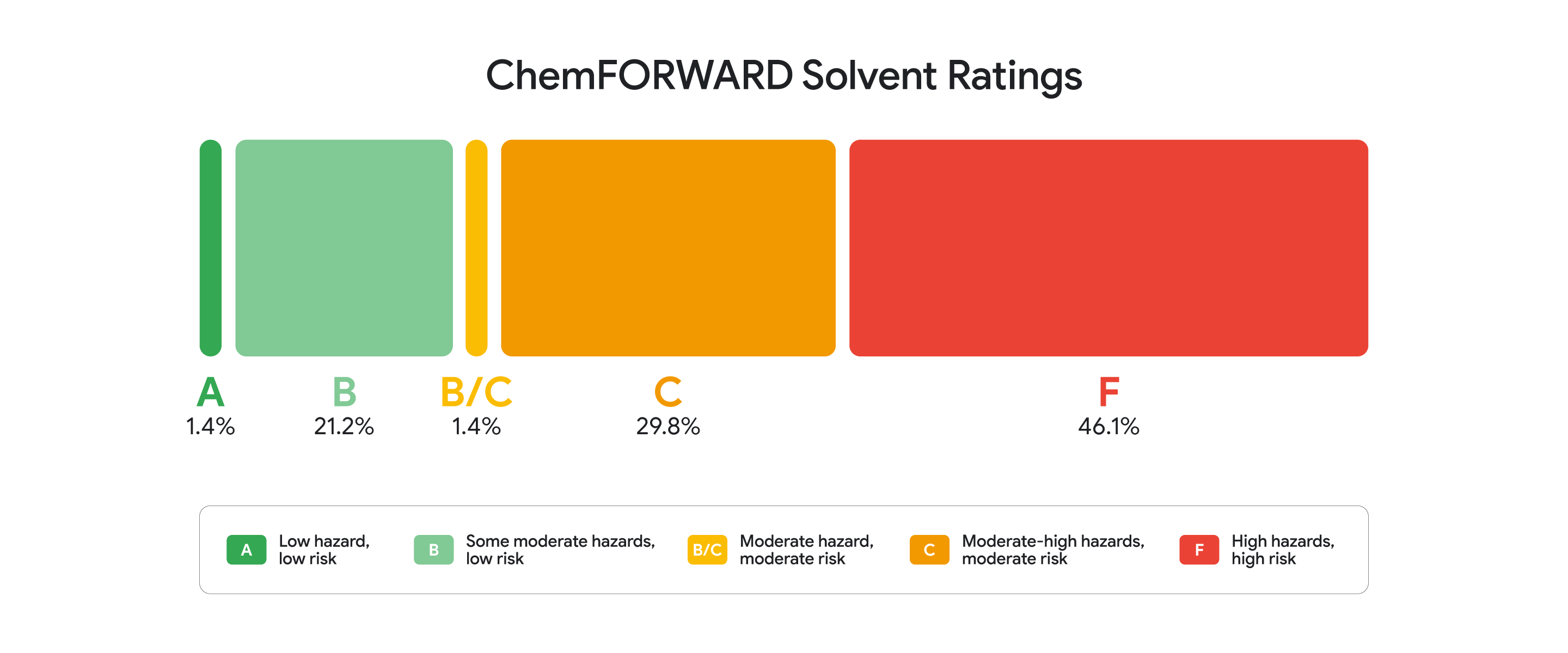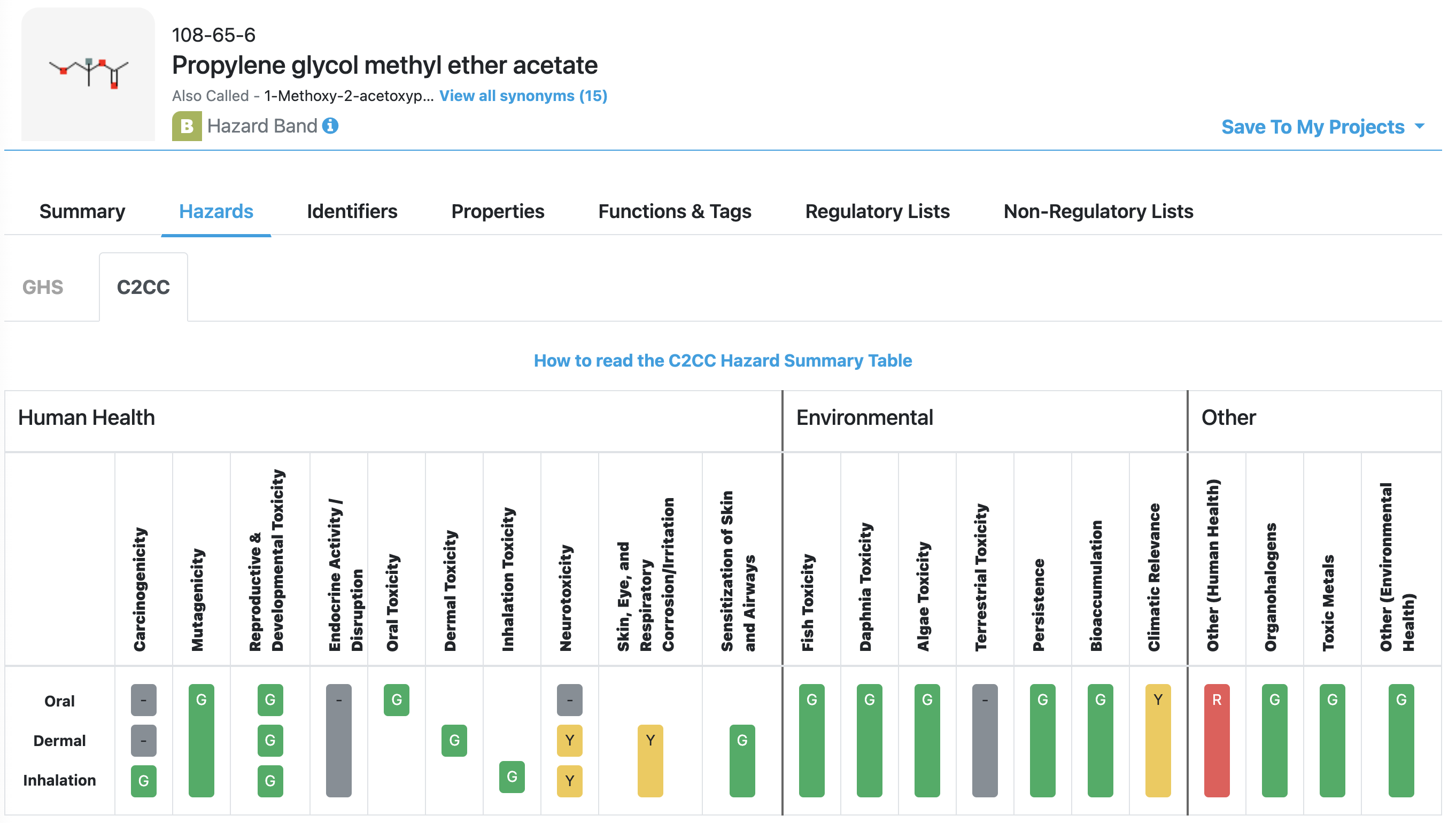A proactive approach to safer product materials
Featured technology
Safer chemistry
Who we’re helping
Supply chain workers and consumers
Our role
Supporting scalable solutions that enable proactive chemical hazard assessments in product development processes

By David Bourne, Sustainability Strategy Lead, Consumer Hardware
The goal of ensuring material safety in the manufacture and use of electronics has been a focus of consumer brands for many years. At Google, we’re continuously refining our approach and developing programs to drive processes with safer human and environmental outcomes. We restrict many hazardous substances and ensure our suppliers have processes in place to detect and prevent these substances from entering the manufacturing processes. Our past work laid a solid foundation as we pursue our next level goals in safe chemistry.
Regulated and restricted substances are incredibly important to eliminate in safeguarding human health and our planet’s ecosystems. However, focusing only on known hazardous chemicals can lead to regrettable substitutions when a replacement’s safety profile is unknown. As we strive towards a more circular economy with recycled materials continuously remanufactured into products, it’s especially important to understand potential hazards across a broader range of materials beyond just those that are restricted and regulated. Building a large data set of chemical hazard assessments (CHAs) across many material categories is the next major step towards achieving comprehensive material safety.
“It takes a lot more information to prove that a chemical is inherently safe than it does to prove that it is toxic. Just knowing that a chemical is a known carcinogen or that it causes skin sensitization can be enough to rule it out. But to be sure that it is inherently benign for its intended use means that data gaps must be filled. A lack of hazard data does not mean that a chemical is inherently benign.” — Lauren Heine, Ph.D. Co-Founder and Director of Science & Data Integrity at ChemFORWARD
Historically, conducting hazard assessments on chemicals has been expensive and time consuming, which limited the number of chemicals ultimately studied for many industries. In addition to those challenges, the data was typically only available to the company that commissioned the assessment and the assessor who performed it. This model limited progress in safer chemistry across supply chains and the need for a better system was clear.
Google set out to accelerate progress by supporting an emerging non-profit, ChemFORWARD (formerly MaterialWise) in 2017. Today, the science-based, value-chain collaboration has grown with participation across industry sectors and is building a shared repository of chemical hazard data with a focus on identifying safer chemical alternatives. This data platform paired with a subscription model is enabling more chemicals to be proactively assessed, making hazard insights less expensive and faster to access by more companies, regulators, policy makers and NGOs.
A foundational element to the success of this model is building a critical mass of chemical hazard assessments in high priority areas. It’s similar to what’s needed for a successful streaming service where subscribers expect a variety of TV shows and movies in their favorite genres. A subscription model for chemical hazard data needs sufficient foundational content that is valuable to a range of stakeholders. As more assessments are added, the value of the subscription increases, creating a virtuous cycle that accelerates the pace of new assessments being created. Google studies material safety in our products and contributes hazard assessments commissioned to ChemFORWARD’s shared repository to increase the value of the platform for everyone.
Safer Coatings and Inks
In Google’s recent product development work, we identified coating and ink materials as a priority focus area given the potential exposure risks for workers at our suppliers’ facilities to harmful chemicals that have historically been used in the industry. Coatings and inks are used in a variety of ways and each formulation contains multiple chemical ingredients, each of which would ideally have a chemical hazard assessment. In our study of these chemicals and formulations, we commissioned assessments from leading toxicology firms and ensured they would be added to ChemFORWARD’s subscription platform.
Since we began our coatings and inks research in 2020, Google has commissioned hazard assessments of 27 unique chemical ingredients that were used across 23 coating and ink formulations. This work enabled Google to make safer material choices, and as part of the ChemFORWARD platform, all 27 assessments are now readily available to other ChemFORWARD subscribers at a fraction of the cost of repeating that work. This is in addition to the 79 CHAs Google previously commissioned including assessments for flame retardant chemicals, PFAS alternatives in paper additives, common solvents in cleaners and degreasers, and common binder ingredients used in the built environment.
For others interested in these materials, having comprehensive hazard assessment data instantly available means that safer alternative assessments can be integrated into the product development process. As engineers and designers are evaluating material reliability, aesthetics, manufacturability, cost and other considerations for parts in a product, they can also evaluate chemical safety in real time instead of waiting for lengthy projects to be completed.
“As material engineers, the ability to immediately review the hazard potential of materials my team is considering during the development process would make a huge difference. When you are developing a product, waiting months for an expensive chemical assessment is an eternity and that delay usually means the insights won’t be available before time sensitive decisions have to be made. This platform will be a game-changer.” — Irina Kogan-Michedo, Google finishes and adhesives materials engineering team lead
This approach to evaluating materials has been increasingly integrated into Google’s product development process through the collaboration of materials engineering, environmental compliance and sustainability strategy teams. In the development of Pixel 7, we wanted to understand the hazard potential of potential formulations for the inks on the back glass. While much industry attention has been focused on Low VOC options, even those formulations contain potentially hazardous solvents.
ChemFORWARD’s platform provides Hazard Bands (A, B, C, or F) for chemicals based on CHAs, GreenScreen Benchmarks, the U.S. EPA’s Safer Chemical Ingredients List and other criteria. Of the 349 solvents that ChemFORWARD has currently rated, over 46% have an F rating which means they have high hazards and high risk in most scenarios. This underscores the importance of fully understanding the hazard profile of materials. In our evaluation process for the ink on the interior surface of the Pixel 7’s back glass, we screened 15 potentially safer alternative solvents and selected a formulation that used Propylene Glycol Methyl Ether Acetate (PGMEA) with a Hazard Band B rating.
C2CC Chemical Hazard Assessment Summary Table for Propylene Glycol Methyl Ether Acetate (PGMEA)
A better rating is not the only consideration in making a safer material choice. While PGMEA has a safer risk profile compared to the majority of other solvents rated in the ChemFORWARD platform, a safer chemical choice can still carry some risks. The hazard assessment data can be used in evaluating remaining risks in the relevant manufacturing, product use or recycling contexts. The risks for PGMEA in product use by consumers or recycling is not applicable because solvents evaporate during the manufacturing process; however, it is imperative to ensure our supplier’s workforce and local manufacturing environment are protected. Making safer chemical choices as in this example requires expert analysis of many risk dimensions and having hazard assessment data is essential in that analysis and in driving industry progress.
“At Google, we have a restricted substances spec that limits usage of unsafe materials in our products. We are not stopping there. We want to change the way we fundamentally formulate materials and go beyond the minimum standards of safety. To achieve this, we are working closely with our vendors to create new materials that will foster a safer chemistry landscape for the entire industry.” — Adi Narayanan, Head of Google Materials Science & Engineering
The ink for Pixel 7’s back glass is one of many examples of where Google has performed proactive, safer chemistry evaluations for the materials used in our products, and we are excited to expand this work and drive industry progress beyond the management of regulated chemicals. More work is needed to improve the body of knowledge available and build the tools to analyze chemical hazard data. In that pursuit, Google is passionate about supporting ChemFORWARD’s approach that makes that knowledge and those tools more widely available and helpful to all.

